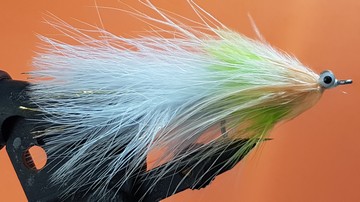Posts Tagged ‘Estuary flies’
{{start}}
{{end}}
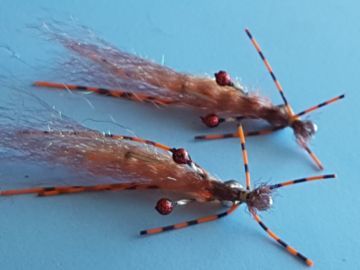
{{+1}}Tidal flats shrimp – orange and brown{{-1}}
{{start}}
This orange and brown size #2 hook version of my tidal flats shrimp is my first choice of fly when targeting feeding trigger fish. It stands out in the storm of mud and other debris that trigger fish stir up as they forage around for food.{{end}}
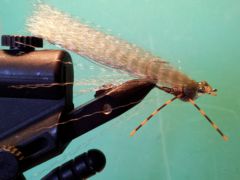
{{+1}}Mud prawn – medium 7cm to 8cm long{{-1}}
{{start}}
In my experience that are very few fish, that we as fly fishers target, that will not readily eat a prawn or a shrimp. This fly is designed to not only to provide representation of a prawn or shrimp that is readily taken by fish but a fly that can be fished like a soft plastic or a faster moving fleeing prawn or shrimp and on top of that a fly that is durable and swims hook point up so that it's fairly snag resistant.{{end}}
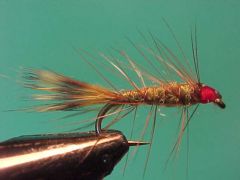
{{+1}}Yabby – Bill’s Eucumbene version{{-1}}
{{start}}
This little woolly bugger type fly was given to me by Jim Blyton. Jim fishes Lake Eucumbene a lot. As is so often the case the locals have developed flies that work for their fishery and this fly is one of those.{{end}}
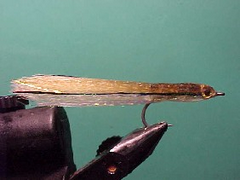
{{+1}}Candy – salt water{{-1}}
{{start}}
Whilst the fly can be tied using materials such as polar fiber or craft fur or un-crinkled nylon materials such as 'Fishhair' I think that candies work better when tied with crinkly nylon fiber material such as 'Superhair' or 'Supreme hair'. Also, both these materials take on a translucency when wet and I think this is one of the triggers to the fly's success.{{end}}
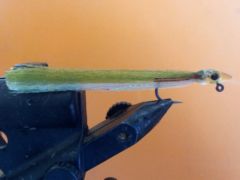
{{+1}}Candy – resin head minnow{{-1}}
{{start}}
This is a great fly to rip through the water in front of Tailor, Australian Salmon, Tarpon and any other fish that is a predator of small fish. The combination of the resin head and the body materials create a fly that is translucent and a very effective imitation of many small thin fish that that are targeted by bigger fish. This fly is much easier to tie than a candy and in my view a better fly overall.{{end}}
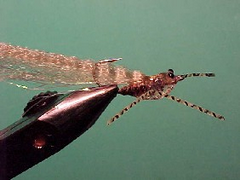
{{+1}}Mud prawn – small 5cm to 6cm long{{-1}}
{{start}}
The mud prawn is my first choice of fly for general prospecting in estuary waters or for targeting, whiting, flathead and bream. In water of only a meter or so fish it on an intermediate line. In deeper water I prefer to fish it on a sinking line. The best retrieve is a jerky but slow retrieve leaving plenty of time between strips for he fly to settle back on the bottom. used in this way it's a good representation of a prawn fleeing from its sandy retreat after being disturbed.{{end}}
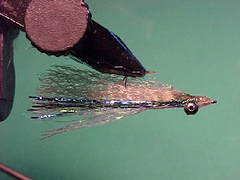
{{+1}}Crazy charlie{{-1}}
{{start}}
There have been many variations and adaptations. My version is based on the original tailed version and works well in estuaries on bream, whiting and flathead etc. I tie all my crazy Charlie flies much fuller with translucent materials rather than sparse with solid materials. I also tie my crazy Charlie flies longer than the hook shank and trim them down on the water if a shorter fly is needed.{{end}}
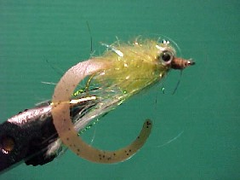
{{+1}}Chatto’s estuary fly{{-1}}
{{start}}
This fly has now accounted for bream, flathead, whiting, trevally, mullet, tailor, flounder, bass and trout. I expect it will be attractive to many other species also. Native fresh water Bass are a favourite of mine and if I could only carry one type of sinking fly to target then with the Black Estuary/Bass fly would be it.{{end}}
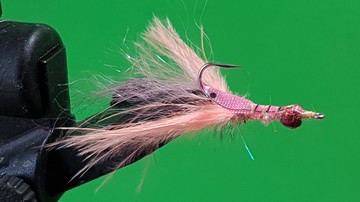
{{+1}}PET shell nipper{{-1}}
{{start}}
This PET shell nipper is significantly different to my PET shell prawn as that is unweighted and is designed to fish hook bite down whereas this nipper has a weight under its tail and is designed to be fished on the sandy bottom with the hook bite up.{{end}}














